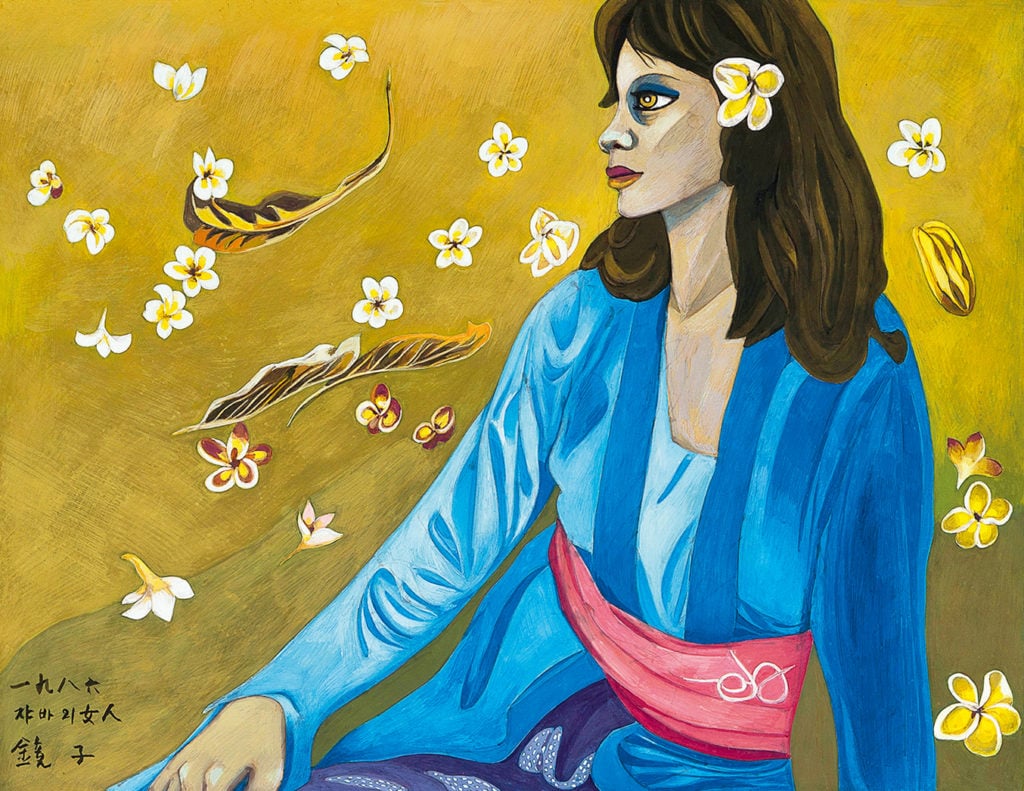Law & Politics
Despite Artist’s Disavowal, South Korean Court Declares Painting Genuine
There may be political pressure for the state to maintain the painting's authenticity.

There may be political pressure for the state to maintain the painting's authenticity.

Alyssa Buffenstein

A court in South Korea has declared a contested painting by artist Chun Kyung-Ja to be genuine, AFP reports, contradicting both forensic evidence and statements from the late artist, which both claim the work is a fake.
The work Beautiful Woman, bearing the date of 1977, is currently in the collection of the National Museum of Modern and Contemporary Art (MMCA). But the story of how it got there is a violent and cinematic one.
According to the report released by prosecutors on Monday, December 19, the painting was previously owned by Kim Jae-gyu, who served as director of the Korean Central Intelligence Agency from 1976. His post ended in 1979, after he assassinated President Park Chung-Lee at a dinner in a KCIA safehouse.
After Kim’s execution by hanging in 1980, the painting fell into the hands of the government.
A number of antiquities and artworks that were once owned by Kim, however, have turned out to be fakes, alleges the defense in a statement.
Chun’s family also claims to have forensics on their side: at their request, French company Lumiere Technology undertook an analysis of Beautiful Woman, and found the possibility that it was painted by Chun to be 0.0002 percent. The prosecution reportedly completely ignored that number.
But above all, the artist herself once asserted, “Parents can recognize their children. That is not my painting.”
A statement from the family’s lawyer reads, “The prosecutors conspired with the MMCA to ignore the scientific opinion of a world-class imagery assessment firm and…produced this ridiculous result.”
“We wonder if the prosecutors…caved in to political pressure,” it continued.
Beautiful Woman has been the subject of conflict for years already, beginning with the artist’s disavowal of the painting in the 1990s. She left South Korea for the United States due to the country’s refusal to acknowledge her claim.
After her death in 2015, the Korea Herald reported, one of Chun’s four children and her son-in-law threatened the MMCA with legal action if they would not acknowledge the painting as fake, claiming the museum was defaming the artist’s legacy and violating human rights.
The Korea Times calls the Chun case “the largest forgery scandal in Korean art history.” It is a foil scenario to the simultaneous, ongoing Lee Ufan controversy, which saw the South Korean artist authenticating 13 works that investigators claimed to be forgeries.